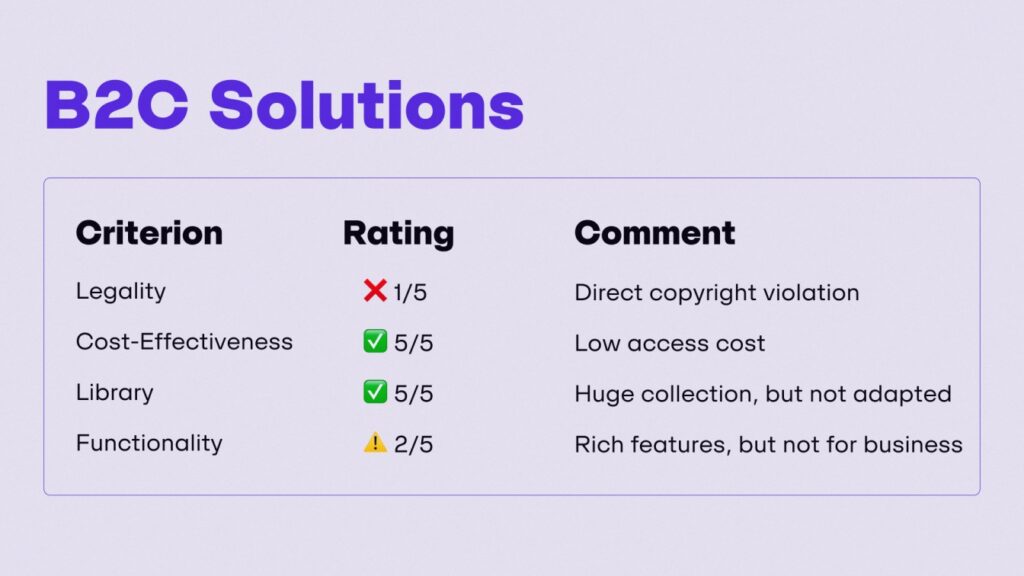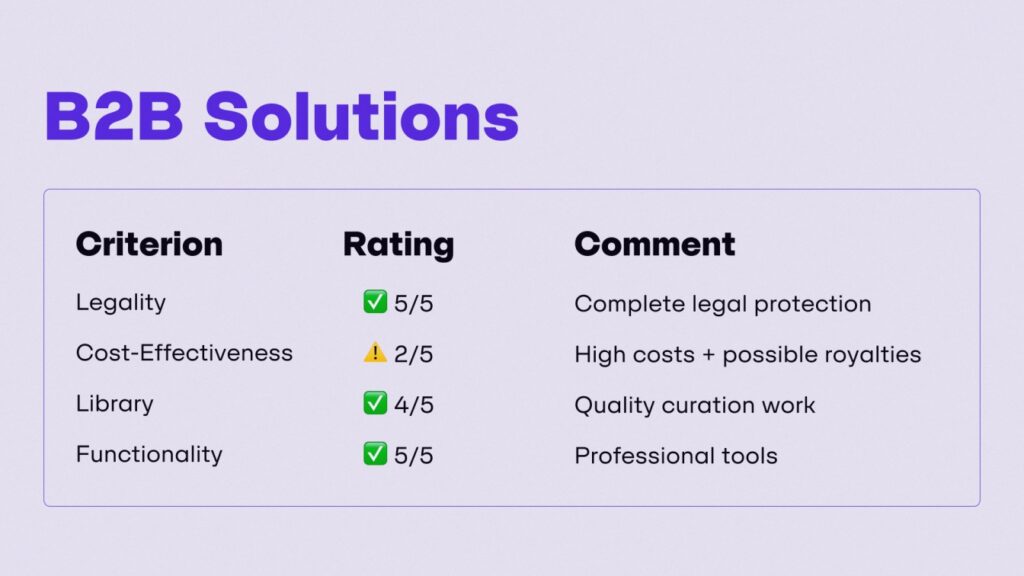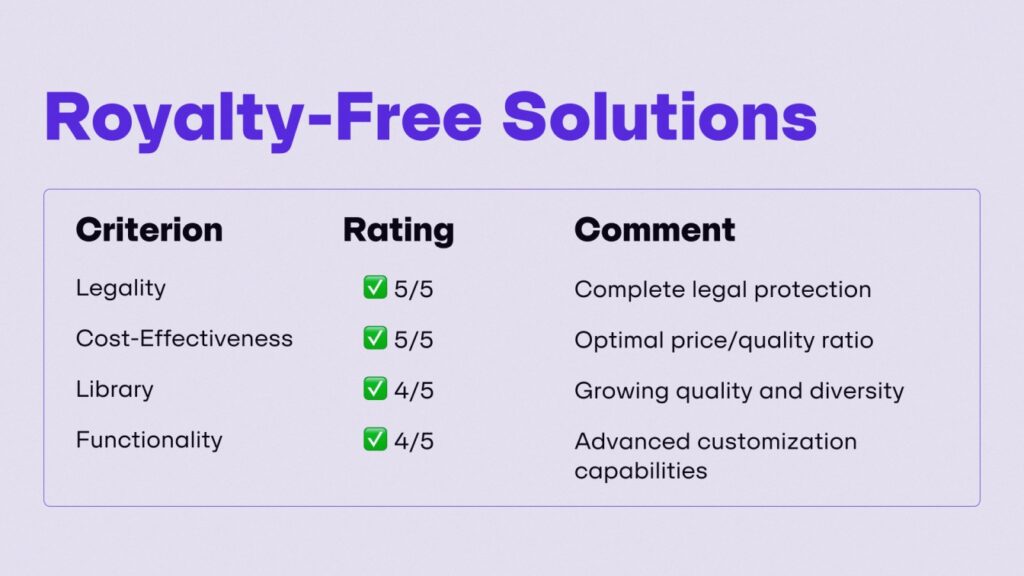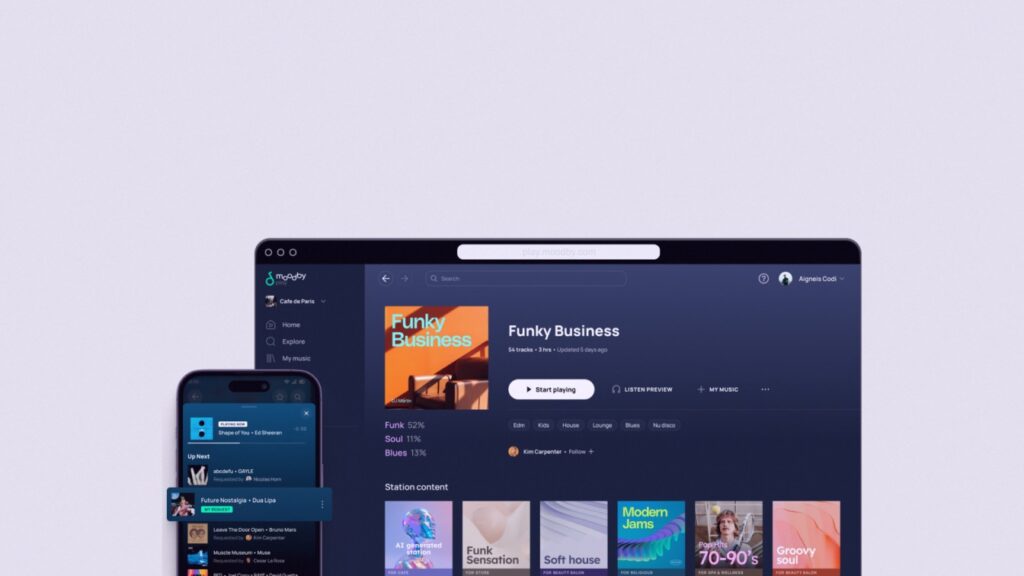Background music streaming services. Which will fit your venue?

March 1979. Inspired by the tense, transient atmosphere of airports, Brian Eno released Ambient 1: Music for Airports—the first album officially labeled “ambient music.” As he said: “to induce calm and a space to think” while remaining “as ignorable as it is interesting.”
Decades later, businesses in commercial spaces have embraced this idea: music isn’t just background noise—it shapes the entire customer experience. Because ultimately, it’s mood and emotion that determine whether someone lingers over dessert, loses themselves in conversation, or simply feels at ease in a carefully designed space.
But as an owner, manager, or operations director, you know the real challenge isn’t just curating the right vibe—it’s ensuring:
- Legal compliance.
- Seamless setup & control.
- Reliable support.
So, what tools and services can help you craft these unique experiences? Let’s dive into the details.
Disclaimer
Let’s get one thing straight upfront: blasting your favorite Spotify playlist or YouTube tracks in your café isn’t just risky—it’s illegal. Copyright law doesn’t care if it’s just background music; unauthorized public playback can cost you anywhere from $750 to $150,000 per song if caught.
Here’s the breakdown:
- B2C streaming (Spotify, Apple Music, etc.) – designed strictly for personal use. Buying a track or album grants you private listening rights. Even if you’ve paid for a premium subscription, playing it publicly violates terms and invites legal trouble.
- B2B licensing (Soundtrack Your Brand, Mood Media, etc.) – the legal alternative. These services secure the necessary rights for commercial use, often bundling licenses from performance rights organizations.
- Royalty-free music (Moodby) is a B2B service at its core, offering key features that help businesses easily manage ambiance. One crucial difference—lower costs and no royalty payments. All rights remain with the platform.
In this guide, we’ll dissect the pros and cons of royalty-free platforms versus B2B services, spotlighting how to stay compliant without sacrificing vibe. Because good ambiance shouldn’t come with a lawsuit chaser.
B2C Solutions

B2C music services were originally designed for personal use. Their machine learning algorithms are optimized for individual preferences, and licensing agreements clearly limit usage to the private sphere.
Cons:
Legal Risks. Using B2C services in commercial establishments is a direct copyright violation with potential fines from $750 to $30,000 per composition. Rights holders and CMOs actively track violations.
Lack of Commercial Adaptation. Algorithms are optimized for personal preferences, not for creating a commercial atmosphere. AI might play a depressive track in the middle of a romantic dinner or aggressive rap in a spa salon.
Inconvenience. Inability to block unwanted content, manage volume through API, or synchronize between multiple locations. Ads in free versions can destroy the atmosphere.
B2B Solutions

B2B music platforms are built on fundamentally different architecture. They integrate licensing databases, professional curation, and business-oriented functionality.
Pros:
Licensing. Platforms conclude direct agreements with labels (Warner Music International, Sony Music Publishing), publishers (Warner Chappell Music), and collective management organizations.
Professional Curation. Teams of experienced DJs, music supervisors, and psychoacoustic experts create playlists for specific business scenarios. Factors considered include: time of day, day of week, seasonality, visitor demographics, architectural features of the space.
Advanced Management. APIs for POS system integration, multi-zone broadcasting, content schedulers, explicit content filters, listening analytics, remote management for chain establishments.
Cons:
High Cost. Services cost from $30 to $50 a month. Corporate rates for chain establishments can reach hundreds of dollars monthly.
Additional Licensing Payments. Some jurisdictions require direct payments to local collective rights management organizations, even when using licensed B2B platforms.
Royalty-Free Solutions

Royalty-free platforms represent a fundamentally new approach to creating and licensing music for business. Modern systems use transformer neural networks (similar to GPT, but trained on audio data) to create original compositions. AI analyzes tracks, extracts patterns of harmony, melody, rhythm, and creates new compositions in specified styles.
Pros:
Complete Legal Safety. Compositions are created without using copyrighted material. All rights originally belong to the platform or are transferred under open licenses.
Economic Efficiency. Subscriptions start from $15-30 per month for unlimited use. No royalties, additional licensing payments, or geographical restrictions.
Perfect Brand Adaptation. Ability to create music strictly according to venue requirements: genre, mood, instrumentation, duration.
Cons:
Limited Recognition. Absence of popular hits may reduce visitors’ emotional connection with the music.
Developing Quality. AI generation hasn’t yet reached the level of top producers in creating complex arrangements and innovative sounds.
Moodby: Where Royalty-Free Music Meets B2B Power

You’re not just looking for a music service—you’re searching for a way to craft the perfect atmosphere.
Whether it’s a restaurant, café, beauty salon, or retail chain, the right soundtrack doesn’t just fill silence—it shapes memories. That warm family dinner, a lingering first date, or even a quiet moment of solitude.
Here’s where Moodby bridges the gap:
✅ Massive catalog of curated playlists—tailored to your brand, mood, and audience.
✅ Zero bureaucracy—licensed, legit, and worry-free.
No credit cards. No commitment. Just sign up, connect your speakers, and set the tone.
Conclusion
Choosing background music isn’t just a technical decision, but a strategic tool for shaping customer experience. A properly selected musical solution can become an invisible but powerful driver of loyalty, dwell time, and average check.
In 2024, the optimal strategy for most establishments becomes combining royalty-free solutions for basic musical background with elements of professional B2B curation for key periods of the day. This approach ensures legal safety, economic efficiency, and quality musical accompaniment of the customer journey.
In a world where every brand touchpoint matters, music can become that invisible bridge between your vision and visitors’ emotions. Choose wisely.


